Series: Arts on the Globe: Challenges and Prospects under the COVID-19 pandemic
In this series we report on how arts and culture have faced up to the challenges of coronavirus in Europe, North America and neighboring countries.
2022/04/01
Case06
Reflections: Preparing fertile ground for culture beyond the COVID-19 pandemic (Part 1)
Professor, Interfaculty Initiative in Information Studies, The University of Tokyo
Shunya Yoshimi
Series: Arts on the Globe
In this series we report on how arts and culture have faced up to the challenges of coronavirus in Europe, North America and neighboring countries
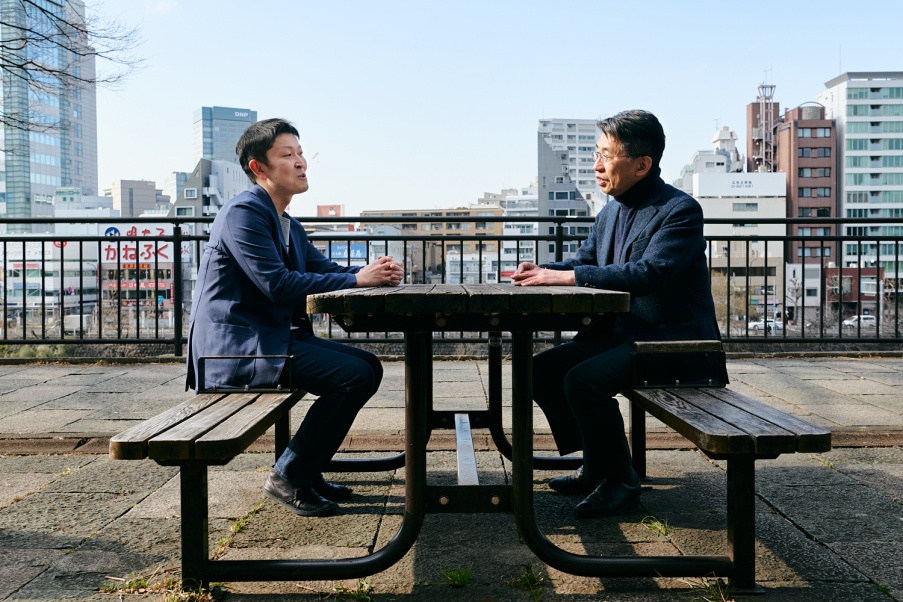
Toshiro Mitsuoka (left) and Shunya Yoshimi
With columns written by experts in various fields, the “Arts on the Globe” series reports on movements in the arts and culture around the world during the COVID-19 pandemic. To close this series, we welcomed Shunya Yoshimi, sociologist and professor in the University of Tokyo’s Graduate School of Interdisciplinary Information Studies. Speaking with Professor Yoshimi is Toshiro Mitsuoka, supervising editor of this series and a professor in the Faculty of Communication Studies at Tokyo Keizai University.
Concerning the situation in Japan, Professor Yoshimi pointed out that the COVID-19 pandemic brought into relief the weak position of arts and culture in society and the insufficient awareness of “professional roles.” He also said that, as we move beyond the “anti-artistic” situation prohibiting direct contact and interaction, it will be important to think about “being together”; and that, on this basis, Japan’s challenge will be to build a consciousness that prepares fertile ground for culture. His observations in this time of crisis offer us wide-ranging ideas and suggestions for a fundamental approach to the arts and culture.
Interview by Toshiro Mitsuoka
Edited and written by Tamaki Sugihara
Photos by Joji Suzuki
The COVID-19 pandemic clarified what “culture” means to Japanese society
Mitsuoka: So far, this series has introduced initiatives carried out in response to the COVID-19 pandemic in several countries and regions—the United States, Australia, Taiwan, Hong Kong and Germany. I know you’ve read the columns in advance of this discussion. First of all, could you talk a little about an example that you found especially interesting?
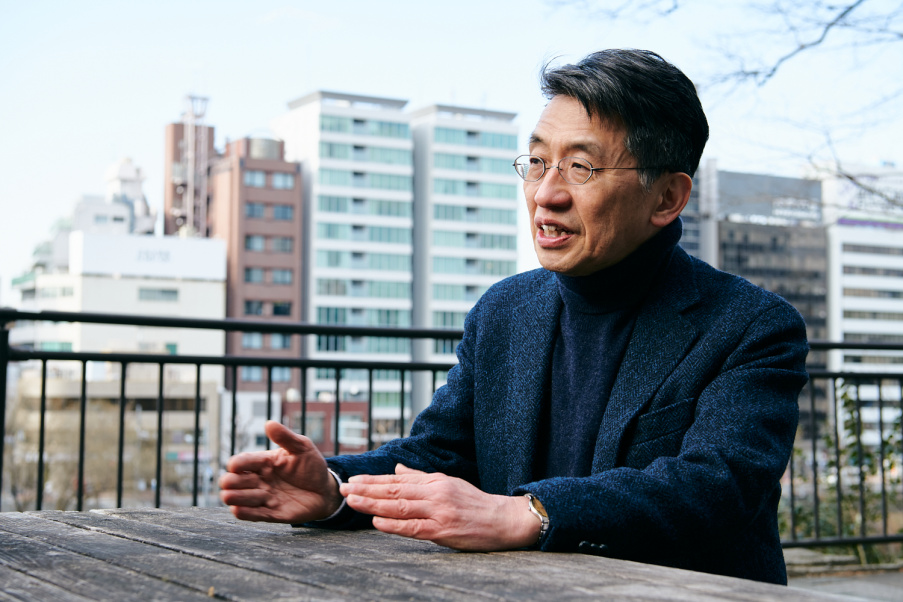
Yoshimi: I’ve read through the series, and one column I found particularly enlightening was the two-part article about the situation in Germany, written by Yuki Akino (Associate Professor at Dokkyo University): “Case 05: The Outlook for Japan through the lens of Germany’s pandemic-related cultural policy (Parts 1 and 2).” Concerning pandemic-related support of arts and culture in Germany, which drew attention in Japan, Professor Akino points out that discussions focusing on differences in speed of response and assistance amounts don’t get to the essence of the matter, and that we should focus instead on the underlying factors—that is, the difference between the two countries’ understanding of the raison d’être of cultural policy in terms of the relationship between society and culture. In other words, the fundamental differences in the positions of the arts and culture in each society were revealed in the form of major differences in addressing the present situation.
Tracing Akino’s discussion further and adding my own interpretation, she mentions several perspectives that come up when society talks about the need for culture and the arts. The first is “personal significance.” There’s a view that, when life becomes more or less stable economically, culture then becomes necessary in order to enrich people’s lives and minds. But in the end this argument simply views culture as the privilege of a class of cultural capital owners. It lacks the persuasive power required to argue that culture is necessary especially in the face of a crisis like the COVID-19 pandemic. Another argument says the arts and culture are important assets that increase a country’s economic strength and reinforce its identity—for example, in Japan people say culture is “soft power.” But even setting aside the circumstances of Germany, where art was used as a propaganda tool in the past, it goes without saying that this argument is not helpful in the COVID-19 pandemic—and when social and financial activity themselves are suspended, it only means that cultural support will be next.
According to Akino, the way of thinking in Germany is neither of the above; rather, it’s the idea that “culture is a mainstay of democracy”—in other words, there’s a shared consciousness in Germany that a culture in which people can express various opinions is a foundation of democracy, or of the public sphere.
Reading the statements of federal cultural commissioner Monika Grütters, which Akino cites frequently in her discussion, Grütters says the following about artists: “They’re people who question everything, who are brimming with imagination and the spirit of experimentation. By provoking contradiction, they energize public discourse and protect democracy from political apathy and the tendency towards totalitarianism.” This is the very definition of culture, isn’t it? Similar statements were made by the prime minister, Angela Merkel. In Japan, on the other hand, politicians didn’t manage to say even one percent of this much about culture. Rather than being a difference in degree, this is surely related to the more fundamental question, “What is the ‘culture’ that government authorities in Japan have been trying to protect?”
Another issue that interested me was that, whereas in Europe, for example, a similar degree of importance was placed on assisting freelance artists as on helping theatres and museums, this type of movement hardly existed in Japan. Reflecting on the reason, I don’t think it’s simply that there was no thought about cultural assistance here. Rather, it’s that in this country, “professional roles” don’t exist as a concept.
This problem isn’t limited to artists. For instance, in Japan, “university professor” is not a professional role, but a “form of employment”—purely a job position. Intellectual, librarian, editor, curator—amazingly, they don’t exist as professional roles here. This is also the main reason Japan can’t free itself from a vertical, hierarchical social structure. In any case, I think that, since people’s merits are hardly ever defined in terms of professional roles in this country, categories don’t exist here, and thus it became difficult to help individual “artists.”
Establishing and understanding “professional roles” makes appropriate assistance possible
Yoshimi: Speaking of whether there’s been a movement for excellent arts assistance in Japan, an organization that has made exceptional efforts in theater, a field I’m interested in, is Japan Performing Arts Solidarity Network (hereafter JPASN). It was launched by Hideki Noda, Kensaku Fukui and others—I helped a little, too—with the support of the Agency for Cultural Affairs.
The premise is that there are many types of “theater people.” At the same time, many of them have trouble dealing with paperwork, since they basically spend their lives in practice rooms and on stages. Also, their work formats are diverse. If you apply systematic thinking to everyone, a lot of people will be left behind. In this situation, a great aspect of the efforts of Mr. Fukui and others has been the pairing of digital archiving of theater performances with financial support, in a program called “Emergency Performing Arts Archive and Digital Theater Support Project,” carried out jointly with the organization Warehouse TERRADA. They asked theater companies to submit their visual content, archived the materials at Waseda University’s theater museum through the intermediary of Warehouse TERRADA, and made them searchable on the website Japan Digital Theatre Archives. Theater companies with a large amount of content have worked with commensurate energy, and these efforts can be said to have yielded results. Also, making these archives available could lead to an increase in revenue-producing activities. I think it’s an outstanding project that has effectively connected the reuse of collections of work with support for the arts.
On the other hand, I don’t know a great deal about the situation in the visual arts, so I was hoping you could tell me about that today.
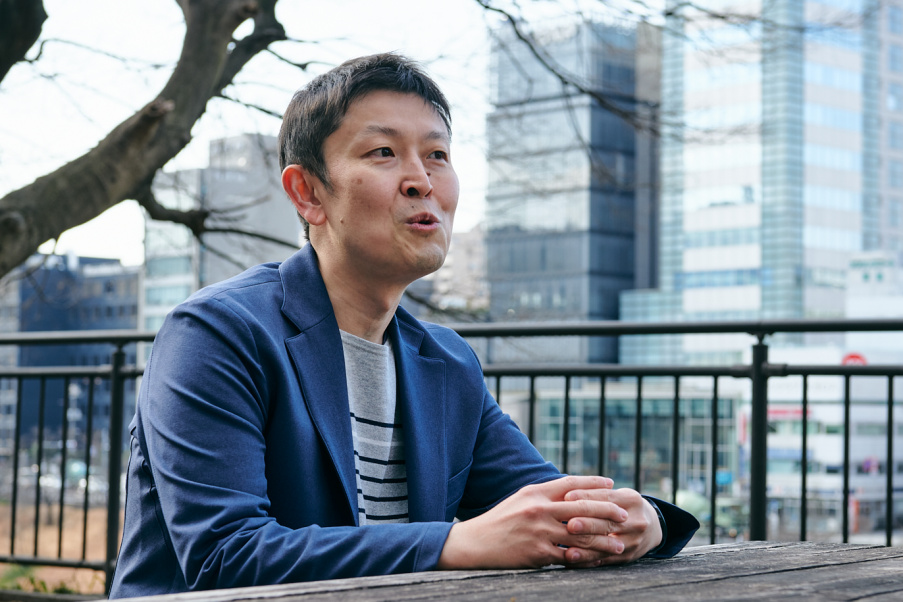
Mitsuoka: Theater and visual arts share general circumstances and issues, but I think the main difference is the group aspect. Japan’s pandemic assistance is basically directed to groups, and even if the majority of theaters are small companies, there are organizations that serve as receiving points. In contrast, there are a lot of people in the visual arts who work individually. It must have been quite difficult to find ways to support people in this sector. This is related to what you said earlier about professional roles, but it seems to me that for the past two years there’s been a spotlight on the work of the art managers who support them.
I also feel that the issue of professional roles is very important. When I was young, I studied cases in other countries. For instance, there’s a book by the Dutch economist and artist Hans Abbing called “Why Are Artists Poor?: The Exceptional Economy of the Arts” (Japanese translation by Kazuhiro Yamamoto, grambooks, 2007). Originally published in 2002, it looks at the lives of artists in the Netherlands from an economic perspective. In the Netherlands at that time, “artist” was already an officially recognized profession, and a system was in place for supporting those who were struggling financially. France also has a system now in which people can receive unemployment insurance if they have an official artist’s qualification. As you said, this is unimaginable in Japan.
Also, it’s true that “professor” is merely a “form of employment” in Japan, and I think our officially recognized professional qualification would be something like our “degree.” Essentially, “artist” is a profession, too, isn’t it? Normally there are social and public certifications (licenses, etc.) for professions. There’s a state examination for doctors and a bar exam for lawyers, and you can’t receive certification if you don’t pass them. I think there are similar systems around the world for artists, but in Japan, artists can’t be certified. The situation for curators seems to be similar. For example, I have a curator’s qualification, but even if you have a qualification, that doesn’t make you a curator.
Another reason for the importance of recognizing professions is that it gives us an understanding of how many people in the country are engaged in them. Of course, state management involves some problems, but it’s only when this kind of system exists that we learn, for example, that there should be more lawyers in Japan, or that medical care won’t function well unless doctors are properly allocated. But in Japan there’s no official professional recognition of people working in the arts and culture, so it isn’t even possible to discuss how many are working in this sector, or whether the number is appropriate in our society. What Professor Akino emphasizes is that the response in Germany was faster because this type of data had been collected. While it isn’t simply a matter of creating a system, this understanding does seem to be an important issue for Japan, too.
Yoshimi: This is a really profound problem. In Japan, people say things like “from membership model to job model” [i.e., shifting from the traditional Japanese employment model emphasizing company membership to a model emphasizing job description], but that won’t go well unless there’s a clear policy regarding professions. There’s no society where people’s work or occupation has as little connection to their prior university studies as in Japan, even with an advanced degree. Fully recognizing a profession and compiling data on it leads to appropriate assistance—and if professions thus become collective associations, this can also put a certain pressure on politicians. Japan’s fundamental problem lies in the fact that this precondition is not established.
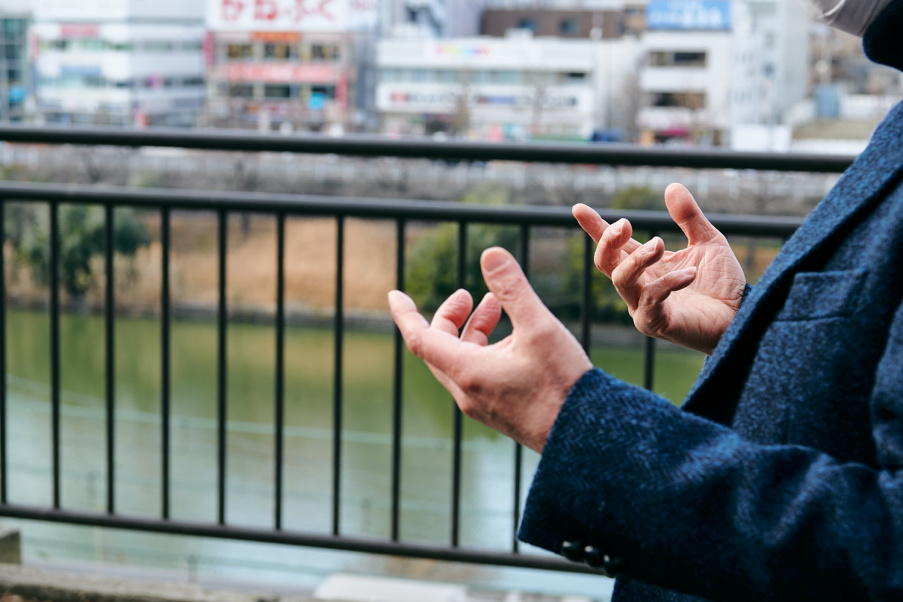
The closeness of the arts and “infectious disease” – creative expression during the pandemic
Yoshimi: I’m also interested in how artists have incorporated this pandemic into their own creative expression, and in what ways they express it as an artistic issue.
There’s a basic understanding that all the messages about COVID-19 prevention that we’ve heard over the past two years—“social-distance,” “stay home,” “avoid the three Cs [closed spaces, crowded places, close-contact settings]”—are essentially anti-artistic. This is because the arts and culture as human activities are indivisible from physical contact, interaction, boundary crossing and collective meals. Also, art is “infectious.” In other words, art is exceedingly close in nature to the coronavirus. We have to proceed from an awareness that the situation over the past two years, when these activities had to be mandatorily suspended, was anti-artistic in itself.
I think creative expression based on this essential meaning for art in the pandemic period has already started appearing in the visual arts, music and theater. To cite an example from the field of theater, there was an interesting exhibition—again, presented at Waseda’s theater museum—called “Lost in Pandemic – Theatre Adrift, Expression’s New Horizons” (June 3-August 6, 2021). This exhibition presented a variety of cases.
For example, a group led by Satoshi Miyagi, General Artistic Director of the Shizuoka Performing Arts Center (SPAC), produced telephone theater performances called “Masterpiece Theater on the Phone.” Maybe they felt that online transmission isn’t theatrical. It’s true that the act of showing stage performances online isn’t theatrical in itself, even if the content is a theater production. Something is different. They thought about what else they could do, and started a telephone theater. The way it works is that the actors actually call up audience members who had planned to go to the theater, and read their designated lines to them on the phone. This produces theatrical simultaneity.
Other examples are works like the Paper Company Project’s “fabricated theatrical performances,” in which flyers, posters and programs are produced and the situation surrounding a theatrical production is created, but nothing actually takes place; and a work by the group Gecko Parade, reminiscent of Shuji Terayama’s “letter play,” in which cards are sent to audience members and the lines written on them get bigger each time. In this way, the theater world has already produced experiments dealing with how to express this situation theatrically.
Of course, there have also been situations that give us a sense of the origins of artistic activity—theater, music and so on—in a simpler way. For example, at the beginning of the pandemic there was a lockdown in Italy, and people in housing complexes went out on their balconies and enjoyed music together. It was wonderful. In those very repressive circumstances, they transformed roads, which are normally spaces for transportation, into communication spaces that close up distances. These were really artistic acts.
On the other hand, it isn’t the case that the arts and culture are good because they’re wholesome—there has to be a more dangerous aspect. In the past, in his essay “The Theatre and the Plague,” Antonin Artaud compared the theater to something like a virus. There’s a similar idea in the work of Shuji Terayama. The act of creating art is similar to a plague or infectious disease and the resulting death. Noh is a rite that revives the dead. That’s why (at the risk of being misunderstood) the dead have to be there. First there’s the world of the dead, and the theatrical act comes about when that world is brought back to life in this world. In visual art, too, the creative expression of people like Christian Boltanski is inseparable from death. There are also examples from olden times, like the Danse Macabre (Dance of Death).
The fundamental closeness of expressive acts and death…in the pandemic, a situation came about in which people had to think about this in a serious manner. In that sense, while it’s certainly very important for artists’ livelihoods to be saved, I think it’s also necessary for artists to be more deeply “infected” by the pandemic than other people. In terms of expression, the act of internalizing and deepening the pandemic within their own sensibilities is necessary because they’re specialists. In olden times, Buddhist priests and religious practitioners sat before deceased people, let the souls of the departed into their own bodies, and uttered their speech. Even if they don’t go that far, I think artists should carry out the act of letting into their body the problem of the death that spread over the world, the problem of the plague, and letting out creative expression.
Mitsuoka: We ourselves tend to focus on the aspect of how to save culture and the arts, but it seems we should think a little more about what it is that only culture and the arts can save. Well, “save” is a strong word.
Yoshimi: Today’s society tends to overvalue the world of “life” and “light.” Even without going all the way back to the Middle Ages, the value of darkness and shadows must have been felt more strongly in the past. We’re at the extremity of the decline of this feeling in the modern age. But I’d like art to be something that also includes these lost values.
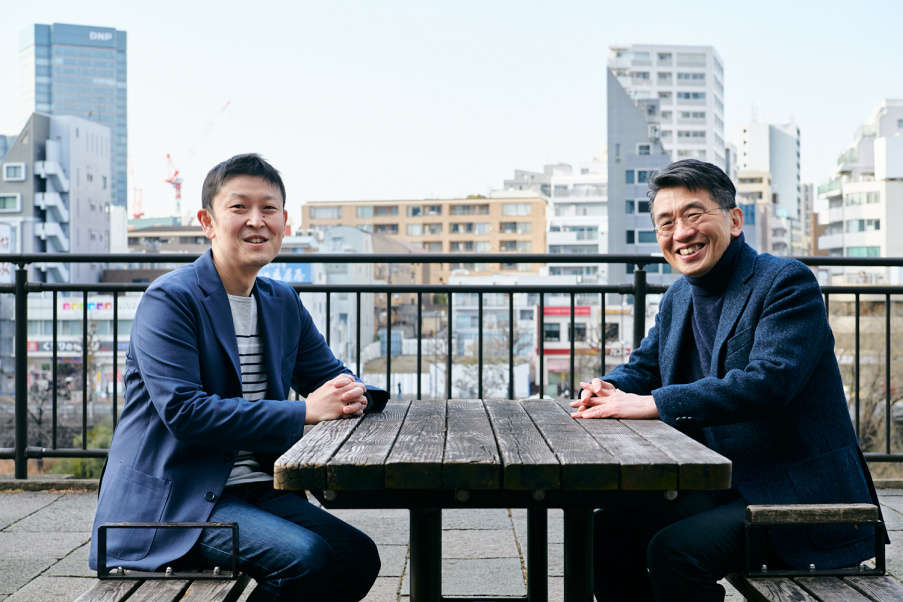
> Reflections: Preparing fertile ground for culture beyond the COVID-19 pandemic (Part 2)
Related Article
- Introduction
- CASE01
U.S: Transformation caused by the pandemic, transformation ongoing under the pandemic
Kosuke Fujitaka (NY Art Beat co-founder) - CASE02
Art in the Face of COVID-19 – Australia
Julia Yonetani (Contemporary Japanese-Australian Artist Duo “Ken + Julia Yonetani”) - CASE03
Taiwan: The state of museums in Taiwan amid the COVID-19 pandemic
Huang Shan Shan (Director, Jut Art Museum) - CASE04
Hong Kong: What Opportunities Does COVID-19 Offer the Arts?
Mizuki Takahashi (HAT (Centre for Heritage, Arts and Textile) Executive Director and Chief Curator) - CASE05
The Outlook for Japan through the lens of Germany’s pandemic-related cultural policy (Part 1)
Yuki Akino (Associate Professor, Dokkyo University) - CASE05
The Outlook for Japan through the lens of Germany’s pandemic-related cultural policy (Part 2)
Yuki Akino (Associate Professor, Dokkyo University) - CASE06
Reflections: Preparing fertile ground for culture beyond the COVID-19 pandemic (Part 2)
Shunya Yoshimi (Professor, Interfaculty Initiative in Information Studies, The University of Tokyo)

